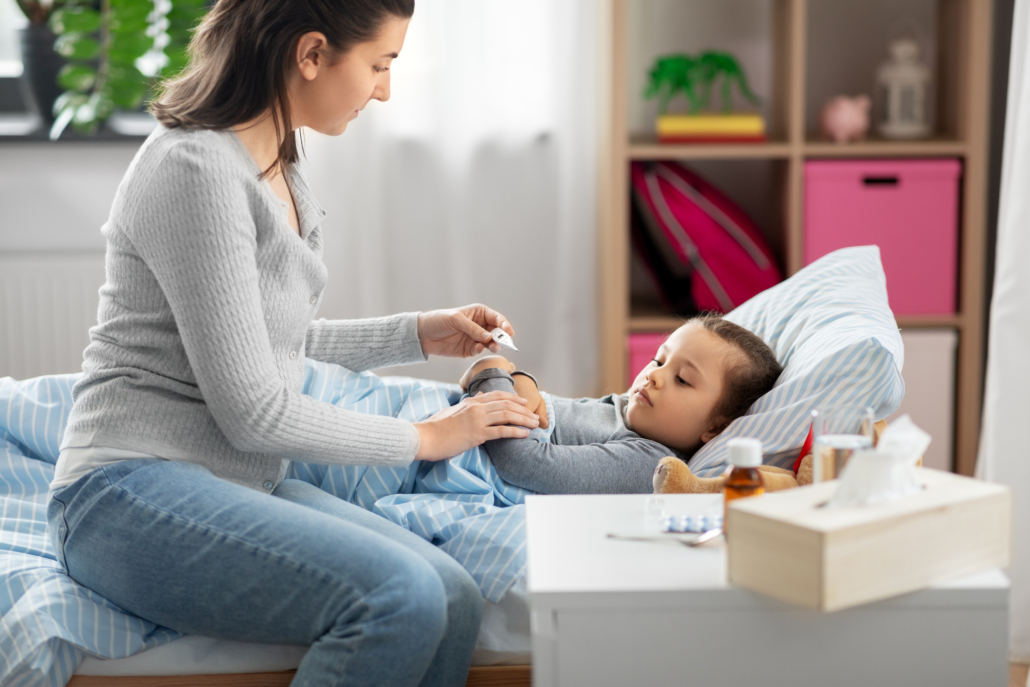Signs of Lead Poisoning: How to Protect Your Kids

family, health and people concept – mother with thermometer measuring temperature of sick daughter lying in bed at home
As a parent, the safety and health of your child is a top priority. Lead poisoning is a serious health concern, particularly for kids who are more susceptible to its harmful effects. This silent menace can have long-lasting impacts on a child’s growth and development. Recognizing the signs of lead poisoning early on is essential to mitigating damage and ensuring your child’s well-being. As such, we’ve compiled crucial information to help you understand the risk factors, symptoms, and preventative measures associated with lead poisoning.
Lead Sources in Your Home
Many household items can contain lead, which can be toxic if ingested or inhaled. Common sources of lead include old paint, dust, soil, and certain types of pottery. If your home was built before 1978, it’s more likely that lead-based paint was used. Chipping or peeling paint can create dust containing lead, which your child can inhale or ingest through hand-to-mouth contact. To stay a little safer, it’s important that you clean your home often to prevent dust build-up, create a safe play area for your kids that is not near old painted walls, and promote healthy habits like washing your hands before eating to prevent ingestion of dust they might have picked up.
Symptoms of Lead Poisoning
The symptoms of lead poisoning can be difficult to recognize, especially in young children who may not be able to communicate their discomfort. Signs of lead poisoning can include stomach pains, frequent headaches, vomiting, and loss of appetite. If your child seems to be more irritable or sluggish than usual, and there’s no other explanation it might be time to consider getting their lead levels checked by a professional.
Prevention is Key
The most effective strategy to protect your child from lead poisoning is prevention. It is crucial to remove, reduce, or seal off known sources of lead in your home until they can be dealt with. Engage professional services to perform safe lead abatement if your house contains lead-based paint. In addition, ensure your child eats a balanced diet replete with calcium, iron, and vitamin C, which can reduce lead absorption. Regular checkups and blood tests can help in early detection and treatment of lead exposure, so make sure to incorporate them into your child’s healthcare routine.
Testing for Lead In the House
To ensure the safety of your home, it’s crucial to conduct lead testing. The most straightforward way is to hire a certified lead inspector who can take samples from various parts of your home and analyze them in a lab. These professionals can check for lead in paint, dust, soil, and even your water supply. In addition, DIY lead test kits are available, though they may not be as comprehensive or accurate as professional testing. It’s worth noting that testing is especially vital if your home was built before 1978 or if you’re planning any renovations because this could release lead particles into your living space.
In conclusion, the risk and impact of lead poisoning on children’s health is a grave matter that requires conscientious attention. As parents, you play an instrumental role in providing a safe and healthy environment for your children. By familiarizing yourself with potential sources of lead in your home, recognizing early symptoms of lead poisoning, practicing effective prevention strategies, and conducting regular lead testing, you can significantly mitigate the risks associated with lead exposure. Remember, your actions today can have a profound impact on your child’s health and well-being in the future. So, stay informed, remain vigilant, and act promptly to ensure your child’s safety from the silent threat of lead poisoning.
By Rachellle Wilber

Leave a Reply
Want to join the discussion?Feel free to contribute!